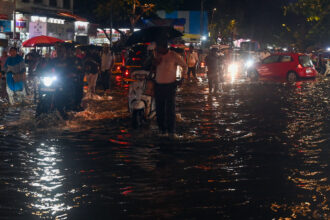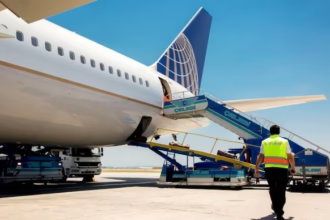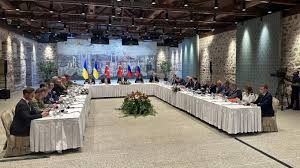Introduction
The Iran Missile Barrage rattled Tel Aviv, Haifa and other Israeli cities on June 22, 2025, after the U.S. struck three Iranian nuclear sites. Major explosions and sirens jolted civilians, while Israel’s defense systems scrambled to intercept. In this analysis, we unpack key facts, figures, and the broader implications.

What Triggered the Missile Barrage?
Early on June 22, the U.S. launched precision airstrikes on Iran’s Fordow, Natanz, and Esfahan nuclear facilities using B‑2 stealth bombers dropping GBU‑57 bunker‑buster bombs, alongside submarine‑launched Tomahawk missiles. President Trump declared the sites “obliterated.” Iran claimed no radioactive contamination was detected, as also confirmed by preliminary IAEA inspections.
Iran’s Response: A Major Retaliation
In retaliation, Iran fired between 27–30 ballistic missiles across two waves targeting Tel Aviv, Haifa, Jerusalem, Nes Ziona, the Ben Gurion airport area, and the Rishon Lezion region. Sirens blared nationwide; Israel’s Iron Dome and Arrow systems intercepted many incoming projectiles. Multiple outlets including Al Jazeera and Reuters provided live coverage of the strikes.
Casualties and Damage Reported
- At least 11–16 people injured, including a 30‑year‑old man hit by shrapnel and two children.
- Impacts reported in 10+ locations, with debris falling near Haifa’s port and structural damage in central Israel.
- Some missiles reportedly struck Haifa without triggering sirens.
Impact on Civilians and Daily Life

Air raid sirens disrupted daily life across Israeli cities. Schools, offices, and public transit were halted temporarily. Authorities instructed citizens to take refuge in shelters until the “all clear” was announced after roughly 40 minutes, according to reports from The Times of Israel.
Military & Political Implications
- Military escalation: Iran’s first major missile strike since U.S. involvement signals dangerous escalation.
- Strategic collaboration: U.S.–Israeli coordination in bombing nuclear facilities, followed by Iran’s coordinated counter‑attack.
- Global concern: UN Secretary‑General Antonio Guterres warned of severe regional destabilization during an emergency press briefing at the United Nations.
What Comes Next?
Tensions remain dangerously high. Iran vows further retaliation, while Israel threatens strikes on missile-launch platforms in western Iran. The possibility of a wider regional conflict—and direct U.S. troop involvement—remains real. International leaders including France and Turkey have called for urgent de-escalation and diplomatic engagement, according to BBC News.
Conclusion
The Iran Missile Barrage marks a dangerous turning point. Prompted by U.S. strikes on nuclear sites, Iran’s missile counter-offensive hit deep into Israel, wounding civilians and signaling a new phase in the conflict. With global condemnation growing and regional war threatening, the coming days are critical.
Stay updated on the evolving situation:
🔔 Call to Action: Share this article to help readers grasp this regional flashpoint—and check back for live updates and expert commentary.









